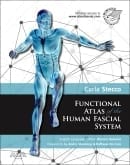
Essential Mat Assessments (3 disc set)
£199.00
If you don’t know what’s broken, you can’t fix it! Don’t be that therapist that simply rubs the sore spots and hope your client gets better.
What sets the exceptional therapist apart from the crowd is the ability to get at the source of their client’s problem. The only way to do this is through a thorough and systematic assessment. Now for the first time, Erik Dalton has compiled 130 of his most important assessment techniques into one comprehensive course.
In the “Essential MAT Assessments” course, you’ll learn how to perform essential orthopedic and osteopathic tests, as well as anatomic landmark exams to get to the bottom of your client’s pain complaint. You’ll also learn how to do a variety of simple neurological tests to determine if your client’s problem is musculoskeletal or neurological. The 130 assessment techniques are grouped under 45 assessment goals for easy reference, ex. “Goal: Assessing for knee dysfunction”. All assessments are mapped to the corresponding treatment protocols in Erik Dalton’s comprehensive MAT courses.
Flexibility, Range of Motion (ROM) and Mobility
Flexibility refers to the ability of a muscle to lengthen, whereas ROM describes how well the joints in the body move. To have good ROM, a joint must be flexible. For example, the knee must have good extensibility to exhibit full ROM. The ability of a joint to move actively through a ROM without restriction or discomfort is termed mobility. It’s important to understand that quality of motion at a joint is usually far more important than quantity of motion. Since all our movements are governed by the central nervous system, the brain will limit extensibility, ROM, and mobility if it feels there is a potential danger. For example, too much extensibility is a potential danger to the body, so the brain acting as a governor will make sure it is only used in a manner that is known to be safe.
Pain Provocation Exams
Pain may be described as an unpleasant sensory and emotional experience associated with actual or potential tissue damage. Each of us learns the application of the word through experiences related to injury in early life. Many clients report pain in the absence of actual tissue damage, and when performing an initial intake evaluation, there is often no way to distinguish whether the client’s perceived pain is due to actual tissue damage. Therefore, if the client labels her experience as pain and reports it in a way consistent with pain caused by tissue damage, it should be accepted as pain. Basically, pain is the body’s message that something is awry. Up to 90% of America’s population will experience recurring low-back, neck and head pain in they lives. These cases do not necessarily represent injury at that particular site, but are usually symptoms of dysfunction in associated structures. So when performing pain provocation exams, we will evaluate the client in the context of all related structures.
Orthopedic Tests
Orthopedic tests are designed to evaluate individuals for musculoskeletal impairment and are generally more reliable when clustered with other physical exams. The general plan for physical assessment includes history taking, examining how the client moves, determining how individual joints move and evaluating the integrity of the nervous system. Most orthopedic tests are used to evaluate pain, loss of joint play, and muscle extensibility, but it’s important to remember these are not stand-alone assessments, and they are not meant to “diagnose” a condition. A medical history and all the evaluative tools mentioned above are necessary for a more complete representation of the client’s health and the nature of injury. In this “Essential MAT Assessments” course, we will be using orthopedic tests in conjunction with neurologic and anatomical landmark exams to help us develop a more holistic picture of our client’s health.





